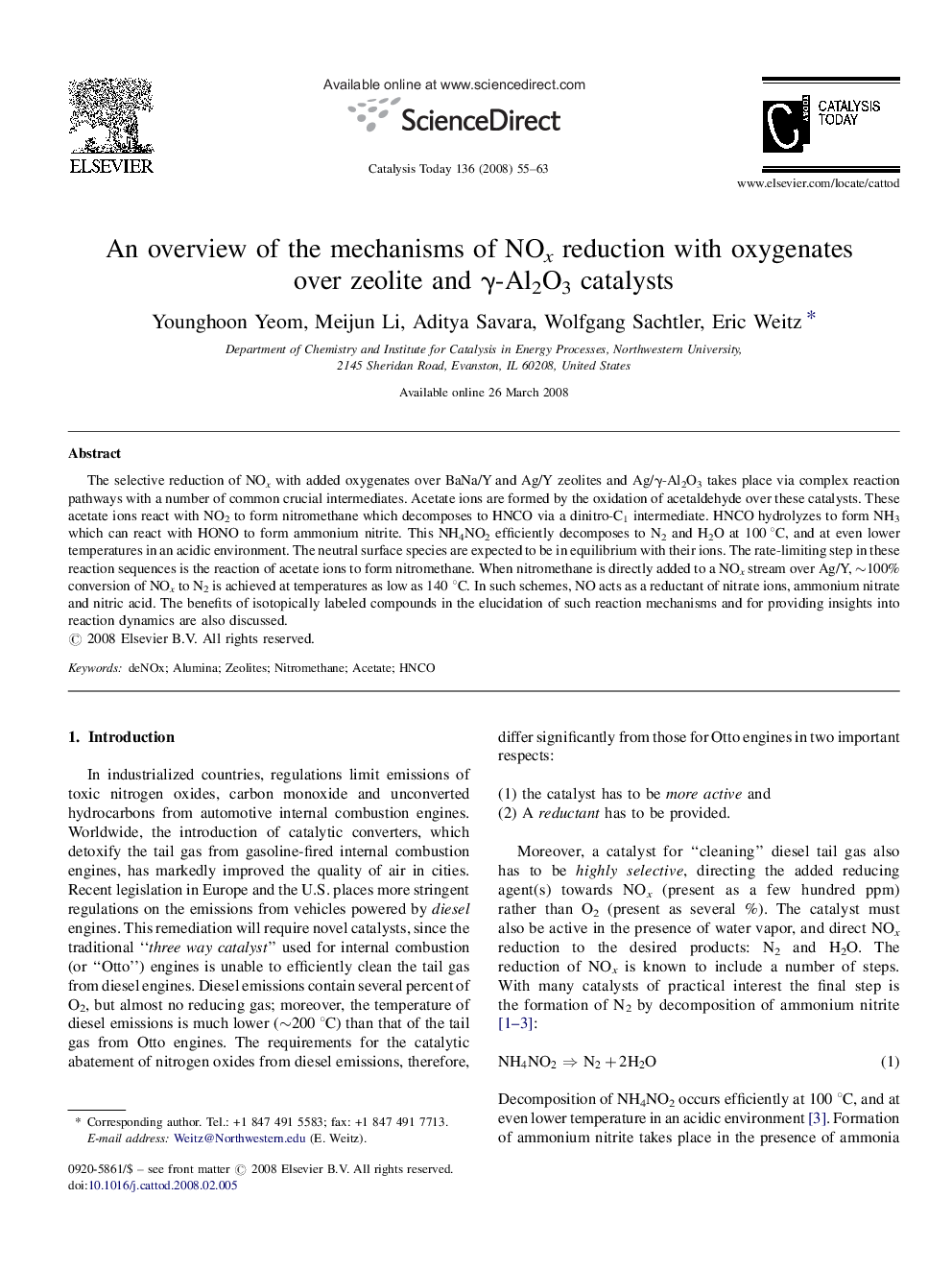| کد مقاله | کد نشریه | سال انتشار | مقاله انگلیسی | نسخه تمام متن |
|---|---|---|---|---|
| 57637 | 47127 | 2008 | 9 صفحه PDF | دانلود رایگان |

The selective reduction of NOx with added oxygenates over BaNa/Y and Ag/Y zeolites and Ag/γ-Al2O3 takes place via complex reaction pathways with a number of common crucial intermediates. Acetate ions are formed by the oxidation of acetaldehyde over these catalysts. These acetate ions react with NO2 to form nitromethane which decomposes to HNCO via a dinitro-C1 intermediate. HNCO hydrolyzes to form NH3 which can react with HONO to form ammonium nitrite. This NH4NO2 efficiently decomposes to N2 and H2O at 100 °C, and at even lower temperatures in an acidic environment. The neutral surface species are expected to be in equilibrium with their ions. The rate-limiting step in these reaction sequences is the reaction of acetate ions to form nitromethane. When nitromethane is directly added to a NOx stream over Ag/Y, ∼100% conversion of NOx to N2 is achieved at temperatures as low as 140 °C. In such schemes, NO acts as a reductant of nitrate ions, ammonium nitrate and nitric acid. The benefits of isotopically labeled compounds in the elucidation of such reaction mechanisms and for providing insights into reaction dynamics are also discussed.
Journal: Catalysis Today - Volume 136, Issues 1–2, 15 July 2008, Pages 55–63